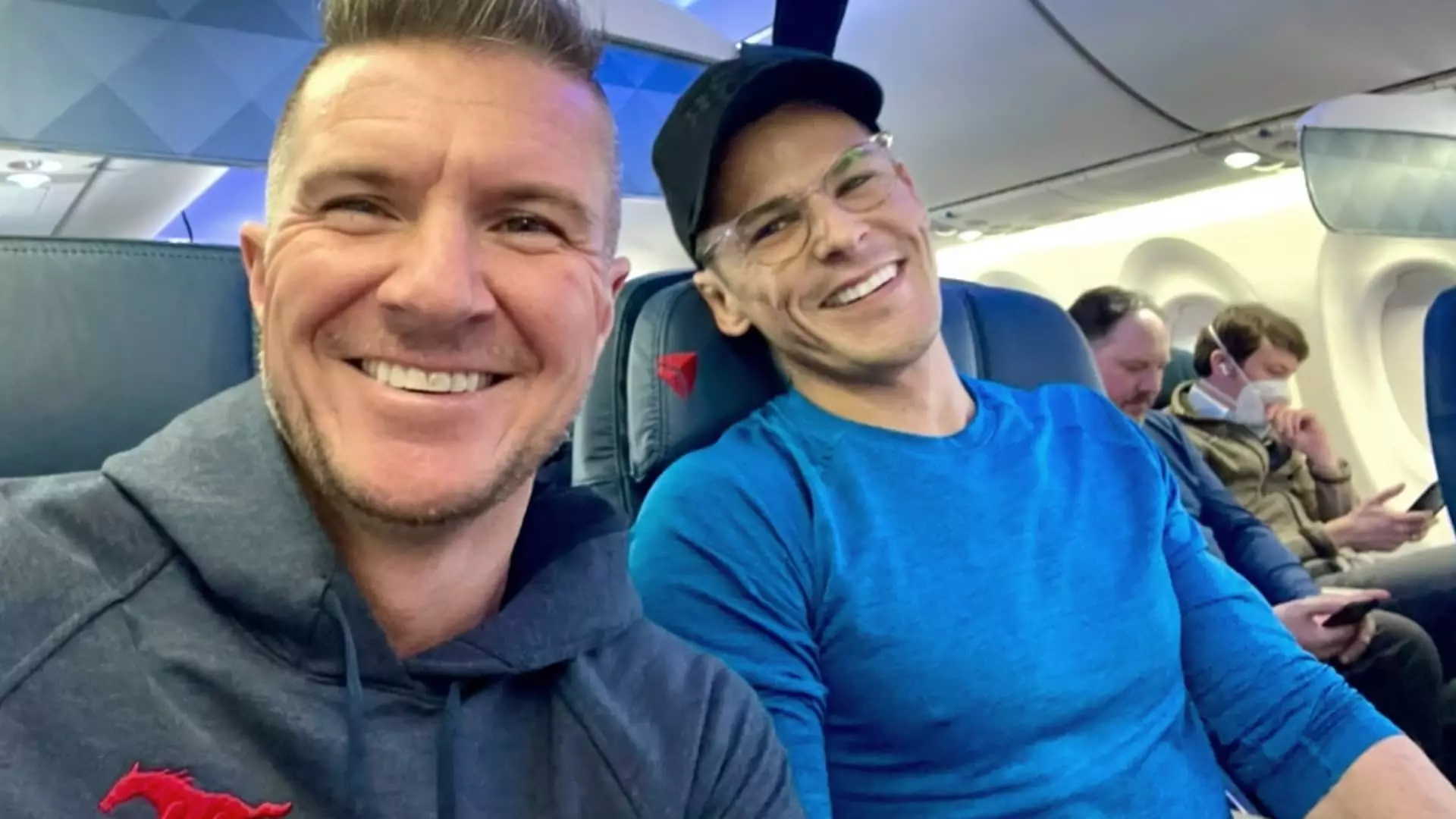Traveling by plane can often feel like a series of unspoken rules and shared customs. Observing proper airplane etiquette might seem straightforward; one would think that being mindful of personal space, respecting fellow passengers, and following the instructions of flight attendants would suffice. Nevertheless, the prevalence of disruptive behaviors on flights suggests a disconnect between this understanding and actual practices. The recently published book, “How to Avoid Strangers on Airplanes: Survival Guide for the Frequent Business Traveler” by Brandon Blewett, sheds light on this conundrum. More than just a critique of inconsiderate travelers, Blewett’s work draws insightful parallels between airline impatience and professional experiences, creating a unique framework for both survival in the air and success on the ground.
Brandon Blewett’s inspiration for the book originated from observing frustrating behaviors among fellow airline passengers during his frequent business trips. Desiring to articulate these behaviors, he initially compiled a lengthy list of common annoyances. However, Blewett quickly realized that merely cataloging grievances would not serve his purpose. Instead, he distilled his observations into six key habits that form a comprehensive guide for navigating not just air travel but one’s professional journey as well. His insights encourage readers to view these annoying passengers as opportunities for personal growth rather than just nuisances to complain about.
The Parallels Between Flight and Professional Setbacks
Blewett highlights an essential and often overlooked concept when traveling: adapting to the dynamics of your environment. He refers to “Gate Lice,” passengers who swarm boarding areas out of turn, as a metaphor for those who may obstruct your professional path. Just as these “Gate Lice” hinder orderly boarding, similar figures often exist within organizations, obstructing our paths to success. The author suggests that learning to navigate around such obstacles—what he terms “the pivot”—is crucial. After initially struggling to secure a favorable job after law school amidst a recession, Blewett turned toward an MBA program with connections to the tax field. This pivot illustrates how perceived dead-ends can instead become stepping stones when approached with adaptability and strategic foresight.
Blewett’s reflections tackle the need for emotional resilience, drawing a parallel between “Airbus Assaults”—the unintentional bumps and jostles endured when passengers clumsily maneuver through crowded aisles—and the verbal or professional “smacks” life can deliver. In aviation, these smacks may be minimal discomfort, but in professional life, they can come in the form of setbacks like missed promotions or unexpected job changes. Blewett shares personal experiences where perseverance amidst such challenges built his eventual success; he emphasizes that resilience is essential for thriving both in-flight and in the workplace.
Handling Difficult Situations with Wit and Humor
Blewett also delves into the manner in which we engage with difficult personalities, exemplified through what he calls “Boeing Boardroom Meetings.” The professionals who conduct loud conference calls at 30,000 feet are likened to those in workplaces who refuse to adapt to team dynamics, often needing to learn the art of diplomacy. Using humor and humility to diffuse tension is an effective strategy, as exemplified by Dolly Parton’s famous interview with Barbara Walters. This anecdote serves as a reminder that handling tense or distracting scenarios—whether on an airplane or in a career—often requires a blend of wit, grace, and steady resolve.
The Lessons from the “Bin Shoehorners” and Other Disruptive Travelers
In discussing the behavior of “Bin Shoehorners,” who cram oversized bags into overhead compartments, Blewett highlights another analogy for professional missteps: pushing for ill-fitting career goals. He acknowledges having once pursued a partnership track that ultimately was not suitable for him, which resonates with the experience of forcing too much into a constrained space—both literally and figuratively. This evokes the idea that clarity about one’s professional identity is fundamental to achieving true success and satisfaction.
Lastly, Blewett addresses the “Eager Exiter,” the passenger who jumps up the moment the seatbelt sign is turned off. In showcasing how these frenetic individuals often miss fundamental steps in the rush to arrive, Blewett calls attention to a broader life lesson: the value of patience and mindfulness in one’s journey. He reminisces about his own winding path from law school to his eventual career, finding that appreciating the journey made for a more fulfilling experience. By embracing both the chaotic moments of travel and professional uncertainty, individuals can find their rhythm and purpose rather than simply fixating on the end goal.
“How to Avoid Strangers on Airplanes” provides a refreshing approach to understanding both the complexities of air travel etiquette and the intricacies of professional life. Blewett reminds readers that within the discomforts of travel and workplace challenges lie valuable lessons for growth and resilience—essential tools for navigating both the skyways and your career trajectories.


Leave a Reply